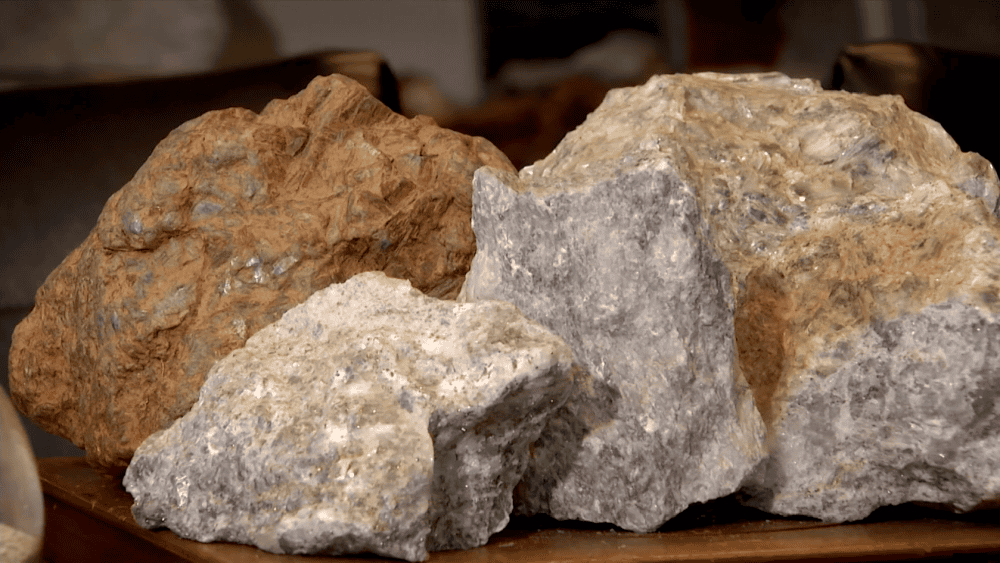
[Image above] The aluminosilicate mineral kyanite is an essential material in the refractories industry, and Kyanite Mining Corporation works to mine the mineral sustainably. Credit: VPM, YouTube
With the explosion in renewable energy infrastructure and digitization of many economies, the demand for raw materials has increased considerably as well. But ramping up production to meet this demand faces environmental and political obstacles, as described in the August 2023 Bulletin feature stories on lithium and copper mining.
Even if these obstacles did not exist, demand would still outpace supply in the short term due to the realities of establishing and expanding new and existing mining operations. The complexities of mining were captured recently in an insightful three-part series by Kyanite Mining Corporation.
Kyanite Mining is a fourth-generation family-owned and operated business based in central Virginia. The company produces high-quality kyanite and mullite products for use all over the world.
In February and March 2024, Kyanite Mining published a three-part “How It’s Made” series exploring the complex process of mining and producing the industrial-grade kyanite used by refractory engineers.
Part 1 shed light on the company’s source mines at Willis Mountain and East Ridge in Dillwyn, Va. It explained that vetting for new mines must consider the size and purity of ore deposits. Once economic viability is confirmed, the article cautions against the practice of “high-grading,” in which miners selectively target high-grade areas while leaving lower-grade ore untouched. Instead, extracting and blending material from different locations standardizes the purification process and “[prioritizes] the next generation over short-term gains.”
Part 2 highlighted the 20+ step beneficiation process that Kyanite Mining uses to remove impurities from the mined ore. Several stages of froth floatation are a core part of this process, which requires large volumes of water. Fortunately, the article states that only a small amount is fresh water as “95–98% of the water we use is recycled continuously to minimize environmental impact.”
Part 3 covered the final stages of milling, sizing, and bagging the kyanite for distribution. By the end, the entire process from extraction to distribution spanned one to two months and required “tens of tons of heavy-duty machinery, an exceptional team, and an unwavering commitment to quality control,” the Kyanite spring newsletter announcing the three-part series states.
As is evident from the above summaries, environmental impacts are top of mind for the Kyanite Mining team during their operations. This commitment to sustainability was showcased in an April 2023 episode of Virgina Home Grown (below), in which Kyanite Mining president Guy Dixon and environmental and safety director John Snoddy discussed the company’s environmental stewardship program.
In an ideal world, all mining companies would be sensitive to environmental impacts when establishing and expanding operations. This awareness becomes even more important as companies rush to meet this current period of high demand.
Since 2005, the Intergovernmental Forum on Mining, Minerals, Metals and Sustainable Development (IGF) has served as a platform for governments to discuss and advance sustainable development goals through effective laws, policies, and regulations for the mining sector. The IGF currently supports more than 80 member countries, and their website contains abundant resources to help facilitate sustainable mining practices.
In December 2023, the IGF released an updated Mining Policy Framework report, which contains a compendium of best practices for governments to manage the full range of issues in the mining sector.
The IGF’s 20th Annual General Meeting is scheduled for Nov. 18–20, 2024, at the Palais des Nations in Geneva. Learn more about this event and how to participate at this link.
